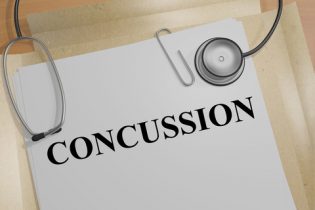Learning the ABCs of Concussions

Northern Health has treated 363 concussion cases at the hospital level over a 13 year span but Thorne says most cases are not reported to hospitals “If a child or individual is showing symptoms of concussion, they often report to their primary care person first ( family doctor) so we don’t collect the data from those injury rates so we know the numbers are much higher.”
Thorne says with classes resuming, it’s a perfect time to spread the word about concussion awareness “Kids are getting into more structured physical activity in fall, so it’s a perfect opportunity to promote some of the new training tools that have come out recently.” One of those new training tools is the Concussion Awareness Training Tool which is online, and offers tips for parents, players, coaches, teachers and health professionals on how to prevent, identify and treat concussions.
Thorne says it’s important to know the symptoms of concussion in a person who has experienced a blow to the body or head . Any of the following symptoms in such cases are a red flag and require immediate medical attention:
- confusion
- vomiting,
- seizures
- weakness in the arms and legs
- tingling or burning in the arms and legs
- change in consciousness or loss of consciousness
- double vision
- behaviour changes
“If someone has experienced a blow and they have a headache, maybe feeling a little irritable and maybe they’re light sensitive and they go and see their family physician, those kinds of symptoms can persist for weeks after the injury and can actually start a couple of days after an injury” says Thorne.
She says it’s also important for those who have suffered a concussion to ease their way back to their normal routines “We recommend a slow return to learn and return to work and to play making sure someone doesn’t increase their mental activity or physical activity too quickly so making sure symptoms are not recurring or exacerbated. So a slow return to work and play is really important.” She says those who return to normal routines too quickly, they will be at greater risk of having a second concussion “Second concussions can lead to more serious complications or longer recovery times.”

Comments
Comments for this article are closed.